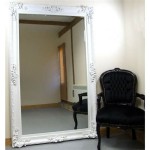How To Screen Mirror On Roku TV From iPhone
Screen mirroring allows users to project the display of their iPhone onto a larger screen, such as a Roku TV. This capability is valuable for various purposes, including presentations, viewing photos and videos, playing mobile games, and more. Connecting an iPhone to a Roku TV for screen mirroring is generally a straightforward process, but certain considerations and troubleshooting steps may be required to ensure a seamless experience. This article provides a detailed guide on how to screen mirror from an iPhone to a Roku TV, covering compatibility, setup, and troubleshooting.
Before initiating the screen mirroring process, it is crucial to confirm that both the iPhone and the Roku TV meet the necessary requirements. The iPhone must be running iOS 12.3 or later. This update includes the necessary AirPlay 2 protocol support, which is often used for screen mirroring functionalities. The Roku TV must also be compatible with AirPlay 2 or Miracast, depending on the chosen mirroring method. Most modern Roku TVs support both, but older models might be limited to Miracast or require a software update to enable AirPlay 2. Checking the Roku TV's specifications and software version in the settings menu is recommended.
Furthermore, both the iPhone and the Roku TV must be connected to the same Wi-Fi network. This is a fundamental requirement for establishing a connection between the devices and enabling screen mirroring. Ensuring a stable and reliable Wi-Fi connection can significantly improve the mirroring performance and reduce issues such as screen lag or disconnections. Optimizing the Wi-Fi signal strength by positioning the router closer to the devices or using a Wi-Fi extender can also be beneficial.
Enabling Screen Mirroring on Roku TV
To enable screen mirroring on a Roku TV, the user typically needs to adjust the settings within the Roku system. The specific steps may vary slightly depending on the Roku TV model and software version, but the general process involves navigating to the settings menu and locating the screen mirroring options. The exact path is usually either "Settings > System > Screen Mirroring" or "Settings > Apple AirPlay and HomeKit".
Within the screen mirroring settings, typically three options are available: "Disabled," "Prompt," and "Always Allow." Selecting "Disabled" will prevent any devices from screen mirroring. "Prompt" will require the Roku TV to display a notification each time a device attempts to connect, requiring the user to manually accept the connection. "Always Allow" will automatically accept any screen mirroring requests from authorized devices without requiring manual approval. The "Prompt" option is generally considered the most secure, as it prevents unauthorized devices from mirroring their screens without permission. However, for convenience, the "Always Allow" option can be used in trusted environments.
Once the desired screen mirroring mode is selected, the Roku TV is ready to accept screen mirroring requests from compatible devices. It's also important to check if the Roku TV has any device whitelisting or blacklisting features within the screen mirroring settings. This allows users to manage which devices are permitted or denied access for screen mirroring, adding an extra layer of security and control.
Initiating Screen Mirroring From Your iPhone
After enabling screen mirroring on the Roku TV, the next step is to initiate the mirroring process from the iPhone. The method for initiating screen mirroring depends on whether the Roku TV is using AirPlay 2 or Miracast for the connection. The AirPlay 2 method is generally preferred for iPhones, as it is designed for seamless integration with Apple devices.
To use AirPlay 2, the user needs to open the Control Center on the iPhone. This is typically done by swiping down from the upper-right corner of the screen on iPhones without a home button, or swiping up from the bottom edge of the screen on iPhones with a home button. Within the Control Center, locate the "Screen Mirroring" icon, which resembles two overlapping rectangles. Tapping on this icon will display a list of available AirPlay 2-compatible devices on the same Wi-Fi network.
Select the Roku TV from the list of available devices. A passcode may appear on the Roku TV screen, which the user will need to enter on the iPhone to confirm the connection. This passcode is a security measure to ensure that only authorized devices can mirror their screens. Once the passcode is entered correctly, the iPhone's screen will be mirrored on the Roku TV. Any content displayed on the iPhone, including apps, photos, videos, and games, will be visible on the larger screen.
Alternatively, some apps have a built-in AirPlay option. For example, when watching a YouTube video or streaming content from another app, a dedicated AirPlay icon might be present within the video player controls. Tapping on this icon will allow the user to directly stream the video or audio to the Roku TV without mirroring the entire screen. This can be useful for conserving battery life and focusing on specific content.
Troubleshooting Common Screen Mirroring Issues
Despite following the correct steps, users may encounter issues during the screen mirroring process. Common problems include connection failures, screen lag, poor video quality, and audio issues. Troubleshooting these problems often involves systematically checking the network connection, device compatibility, and software settings.
If the iPhone fails to connect to the Roku TV, the first step is to verify that both devices are connected to the same Wi-Fi network. Also check the Wi-Fi signal to ensure its strength is sufficient. Restarting both the iPhone and the Roku TV can also resolve temporary connection glitches. If the Roku TV is not appearing in the list of available AirPlay 2 devices on the iPhone, double-check the screen mirroring settings on the Roku TV to ensure that it is enabled and set to "Prompt" or "Always Allow."
Screen lag or poor video quality can often be attributed to a weak Wi-Fi connection or interference from other devices. Try moving the router closer to the iPhone and Roku TV, or reduce the number of devices connected to the Wi-Fi network simultaneously. Closing unnecessary apps on the iPhone can also free up processing power and improve mirroring performance. Ensure the Roku TV's software is updated to the latest version, as these updates often include performance improvements and bug fixes.
Audio issues, such as no sound or distorted sound, can sometimes occur during screen mirroring. First, confirm that the volume is turned up on both the iPhone and the Roku TV. Check the audio output settings on the iPhone to ensure that the sound is being routed to the Roku TV. In some cases, switching the audio output from "Automatic" to "Speaker" or "AirPlay" can resolve sound problems. Disconnecting and reconnecting the screen mirroring session can also sometimes fix audio glitches.
Another potential issue is compatibility with certain apps. Some apps may have restrictions that prevent screen mirroring due to copyright protection or licensing agreements. In such cases, the app may display a black screen or an error message when screen mirroring is attempted. There is typically no workaround for these restrictions, as they are implemented by the app developers. Contacting the app developer directly is the only method for clarification or to request mirroring support.
Occasionally, a factory reset of the Roku TV might be necessary to resolve persistent screen mirroring problems. This will erase all settings and data on the Roku TV, so it should only be performed as a last resort. After the factory reset, the user will need to reconfigure the Roku TV and its network settings. However, this can often resolve underlying software issues that are preventing screen mirroring from working correctly.
If none of the above troubleshooting steps resolve the screen mirroring issues, it is advisable to consult the Roku support website or contact Roku customer support for further assistance. They may be able to provide more specific troubleshooting steps based on the Roku TV model and software version. Apple support can also be contacted if the issue seems to be related to the iPhone or AirPlay 2.
How To Mirror Your Iphone A Roku Tv

How To Screen Mirror Your Iphone A Roku Tv Otech

5 Easy Steps To Mirror Iphone Roku Istreamer

3 Easy Methods How To Mirror Iphone Rokutv Airdroid
How To Screen Mirror On A Roku Tv With An Iphone Quora

How To Mirror Iphone Roku Without Wifi 5 Steps With Pictures

How To Use Screen Mirroring With Your Android Or Windows Device Roku

How To Screen Mirror Roku Tv From Iphone Android And Pc

5 Easy Steps To Mirror Iphone Roku Istreamer

How To Screen Mirror From Your Phone Tablet Or Computer Roku Streaming Device








